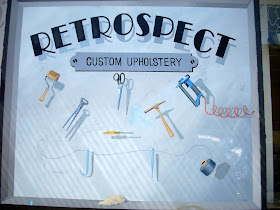
Back in September I quoted a poem
here by Aleda Shirley called
Green Oldsmobile. That poem came to my notice in a special section of
Poetry Magazine devoted to poets who had died in 2008.
I discovered that the San Francisco library where I work did not have Shirley's final book of poetry called
Dark Familiar (Sarabande Books, 2006) so I ordered it. The pace of the book-dsitribution world seems to be slowing down as the electronic info-world speeds up, so it did not surprise me that the paper copy of
Dark Familiar only arrived this past week, seven months after the order was placed.
Several poems in the book have the same titles as Mark Rothko's paintings, or at least they sound the same:
Brown, Black on Maroon
Three Blacks on Dark Blue
Purple, White and Red
My favorite in the collection is called Blue Over Orange and is set in the autumn, so quoting it now in the spring seems like a proper tribute to the time when I learned about this poet, after she had already died.
October's first cold day & when I get in the car
my breath forms a brief chrysanthemum
on the inside of the windshield & I'm aware,
suddenly, of all the yellow leaking from the world,
the lost green veins of the leaves. On my list
of errands the last stop is the video store where
the movies I watched in college are now classified
as Cult Favorites or Classics & the beautiful boy
who works the counter rolls his eyes when I take out
the Truffaut for the dozenth time. Not again, he says.
He's nice to everyone, but he sees me, if he sees me at all,
as an adult woman in a dark coat, with an expensive bag.
We touch only when we exchange money. The lobby
of a narrow French apartment, an allee of poplars:
those are scenes from a movie, not my life. I'm unlikely
to rent the movies that excite him: Japanese animation,
a documentary on mountain climbing, seventies concert films
from before he was born. Hours later, at home
with my glass of bourbon, he's with me still, & I think,
out of nowhere I tell myself, about how when I was thirteen
& we lived overseas I saw middle-aged NCOs
with beer guts & sunburned scalps walking the streets
of San Angeles City, holding the hands of girls
not much older than I was, girls paid to be adoring,
who covered their mouths when they giggled
& wore strange yellow nylons the color of no human skin.
When we'd walk down those streets, my friends & I,
our raffia bags stuffed with devalued pesos,
Filipino boys would sit on their haunches & make
wet clucking sounds at us. Back then I imagined the misery
of the teenaged prostitutes, though not in any detail,
& the men's daughters stateside, reading
Tiger Beat in their rooms, trying on Yardley lipstick.
Later I thought about the wives, left behind
at Lackland or Minot or Clovis, the scent
of coffee, Salems, Emeraude, & something that may
or may not have been history pushing them to the sides
of their own lives; now I think of the men –
how little of life turns out to be a choice, after all,
& the way those choices we do make
can transform beauty into pathos or desire
into commerce. We are, all of us, almost alike.





























































